Jeonju Bibimbap, the most popular traditional Korean dish among foreigners
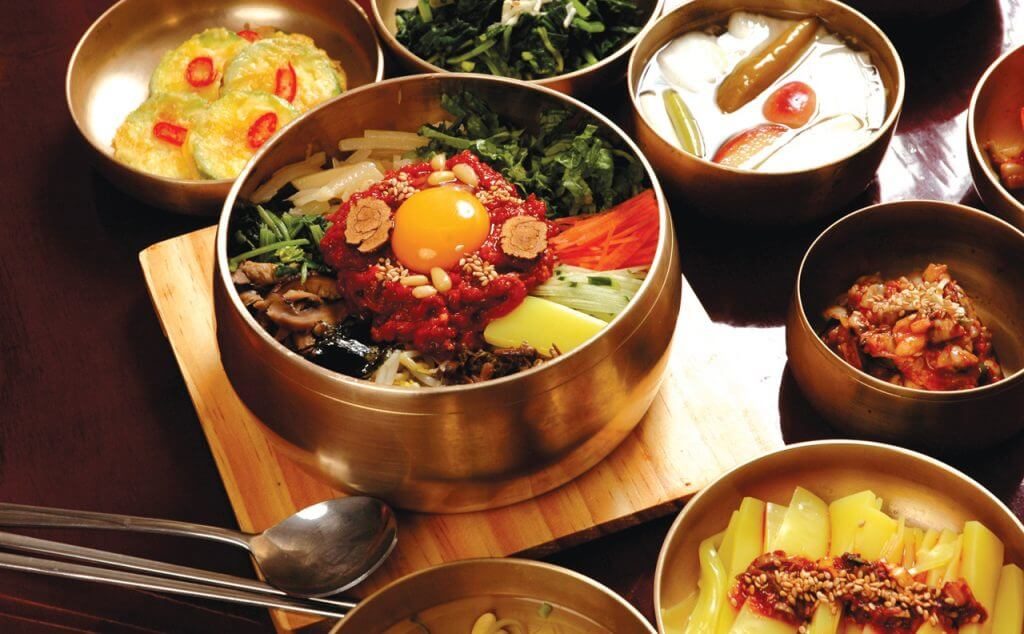
Jeonju Bibimbap, the most popular traditional Korean dish among foreigners, is the best traditional Korean dish in terms of its history, aesthetics, flavour, and nutrition.
To make Jeonju Bibimbap, firstly, the rice is cooked with beef broth and bean sprout. Placed over the rice are each handful of fresh ingredients, including bean sprout, gingko nut, pine nut, chestnut, spinach, lettuce, bracken, mushroom, turnip, carrot, seaweed, beef, and others depending on the season. Thus, all the five cardinal colors and five flavors are contained in a bowl of Jeonju Bibimbap to make the dish aesthetically pleasing and savory. Also, the dish is balanced in terms of nutrition and especially rich in vitamins and minerals. Jeonju Bibimbap is a dish that conveys ancient wisdom and loved by gourmets around the world.
The history of Jeonju Bibimbap – Originated from the Korean royal cuisine
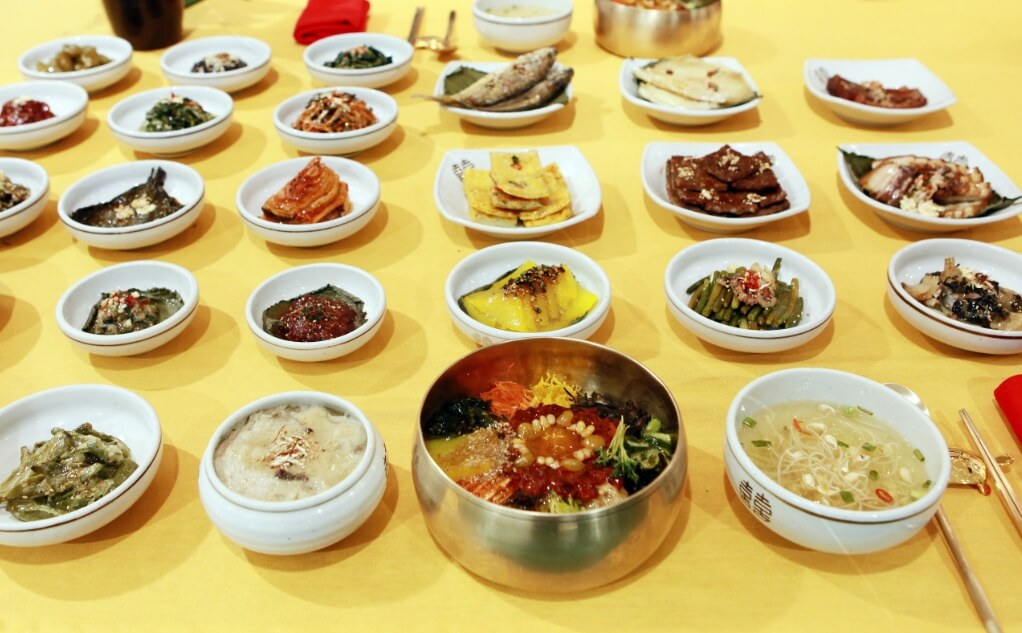
There are different theories about the origin of Jeonju Bibimbap, including the royal cuisine, Confucian sacrificial food, leftover food, farm food, Joseon Dynasty field ration, and others. However, many food experts agree that Jeonju Bibimbap originated from the Joseon Dynasty royal cuisine which later spread to commoners. According to records, Jeonju Bibimbap was already popular 200 years ago.
Various quality local ingredients (‘the Ten Flavors of Jeonju’) and the locals’ famous kitchen skills are the main reasons to why Jeonju Bibimbap has been representing traditional Korean dish.
The history of the name ‘Bibimbap’
The records show that the name of Bibimbap has underwent changes. However, all those different names meant ‘mixing the side dishes with rice.’
Goldongjiban
: Bibimbap is called ‘Goldongjiban’ in Dongkuksaesigi, a book introducing different regional customs which was published in 1849. ‘Goldong’ means mixing different things.
Bubimbap
: Bibimbap is called ‘Bubimbap’ in Siuijeonseo, a cookbook on the aristocratic house cuisine published around late 1800s. The name ‘Bubimbap’ also appears in Joseonyorijaebeop, a cookbook published in 1913 by Bang Sin-Young.
Bibimbap
: The current name is ‘Bibimbap.’
Features of Jeonju Bibimbap
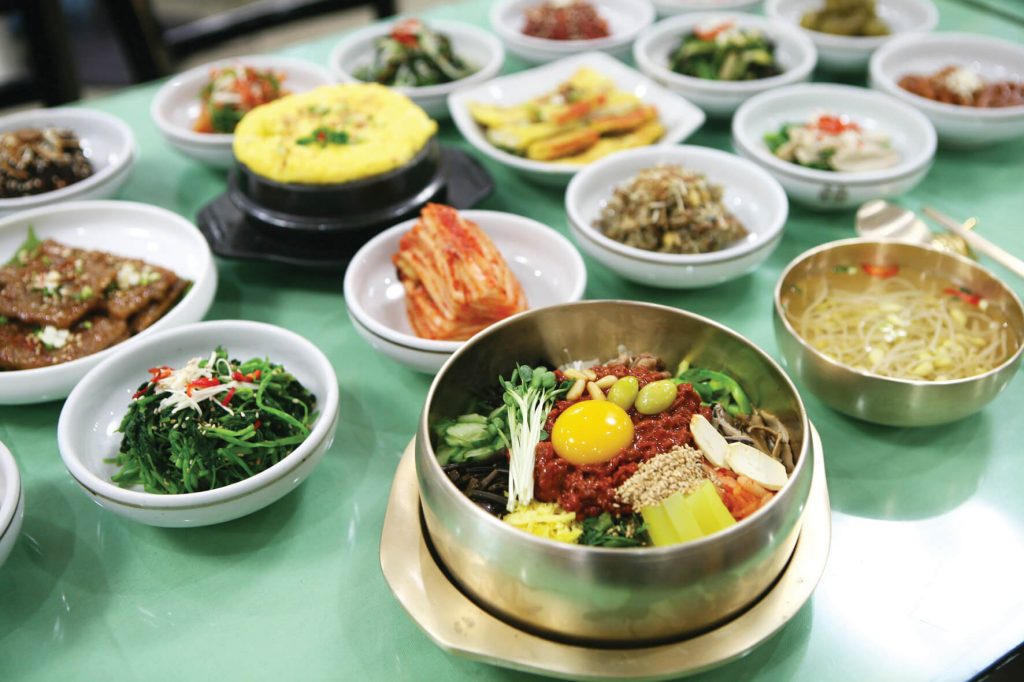
According to historic records, Jeonju Bibimbap was mostly served during the banquet hosted by the governor. So the dish used to be gourmet for nobilities. The records also say that Bibimbap was enjoyed by the people of Jeonju since 1800s, especially from February to April. So the history of Bibimbap well goes back to 200 years ago.
30 ingredients of Bibimbap
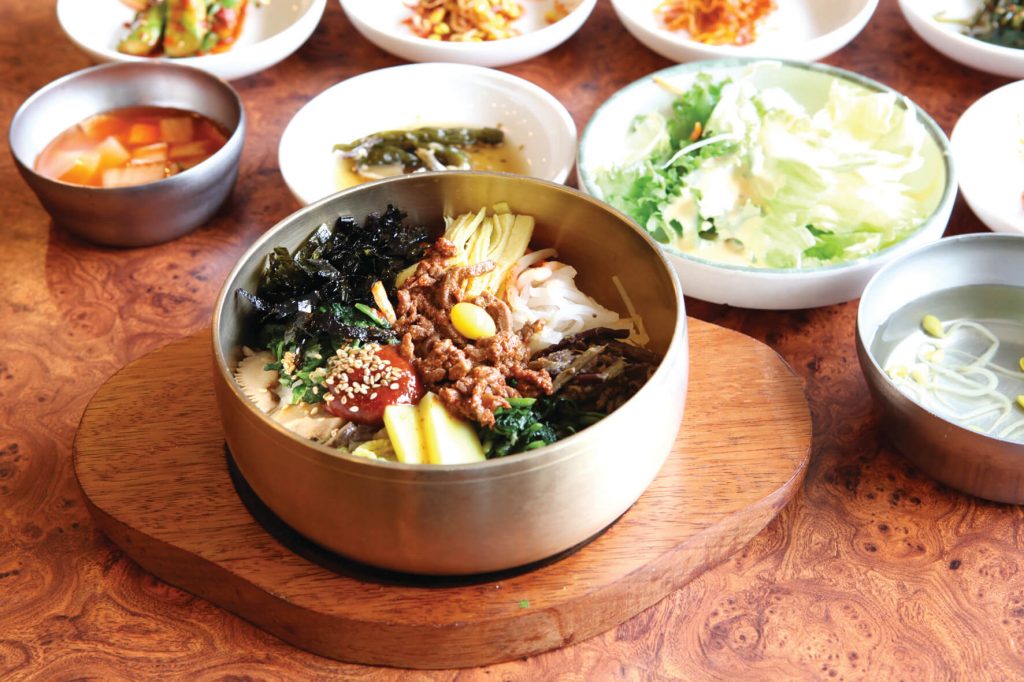
Around 30 ingredients go into a bowl of Bibimbap. Among these, the key ingredients that decide the flavor of Bibimbap are bean sprout, hwangpomook (yellow mung bean jelly), red chili pepper paste, beef tartare, and jeopjang (fermented soy sauce).
Bean sprout
: One of ‘the Ten Flavors of Jeonju,’ bean sprout was mostly supplied from the neighboring Imsil region. The bean sprout was also called ‘juinoonikong (mouse-eyed pea)’ because it resembled the eye of a mouse.
Hwangpomook (yellow mung bean jelly)
: Also one of ‘the Ten Flavors of Jeonju,’ Hwangpomook is made from mung bean and the spring water of Omokdae Pavilion. The mung bean jelly is dyed yellow with gardenia, so the jelly is named Hwangpomook or yellow mung bean jelly.
Red chili pepper paste
: The red chili pepper paste is the fermented mixture of fermented malt, glutinous rice, and red chili pepper power. The paste is mostly supplied by the neighboring Sunchang region, famous for fermented food. The best red chili pepper paste used in Bibimbap is fermented for three years.
Beef tartare
: The beef in Bibimbap is mostly tartare or pan-fried rump cap. According to ancient culinary books, Jeonju is famous for a dishes named Yeonyeopjjim, or steamed rump cap wrapped in lotus leaves.
Jeopjang (fermented soy sauce)
: Jeopjang refers to soy sauce that has been fermented for more than 5 years. During the fermentation process, soy protein is disintegrated into amino acid, giving it more delicate and savory flavor. In addition, when seasoning greens for Bibimbap, soy bean paste fermented for more than 3 years is used.
The harmony of five cardinal colors and five tastes
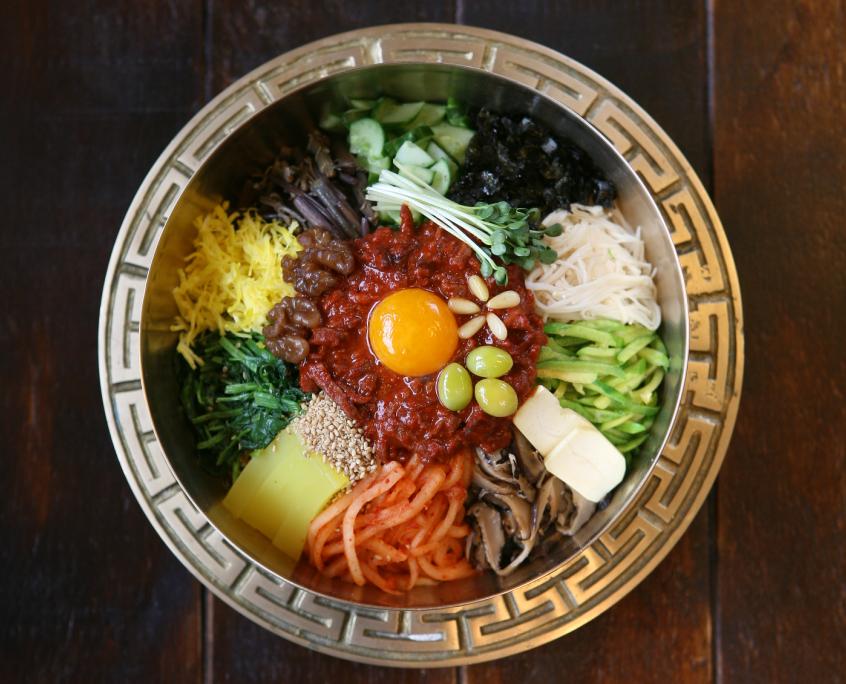
The ingredients for Bibimbap are selected according to the ancient wisdom of Yin and Yang and the Five Elements. The harmony five cardinal colors and five flavors are aesthetically pleasing and savory.
The harmony of five cardinal colors
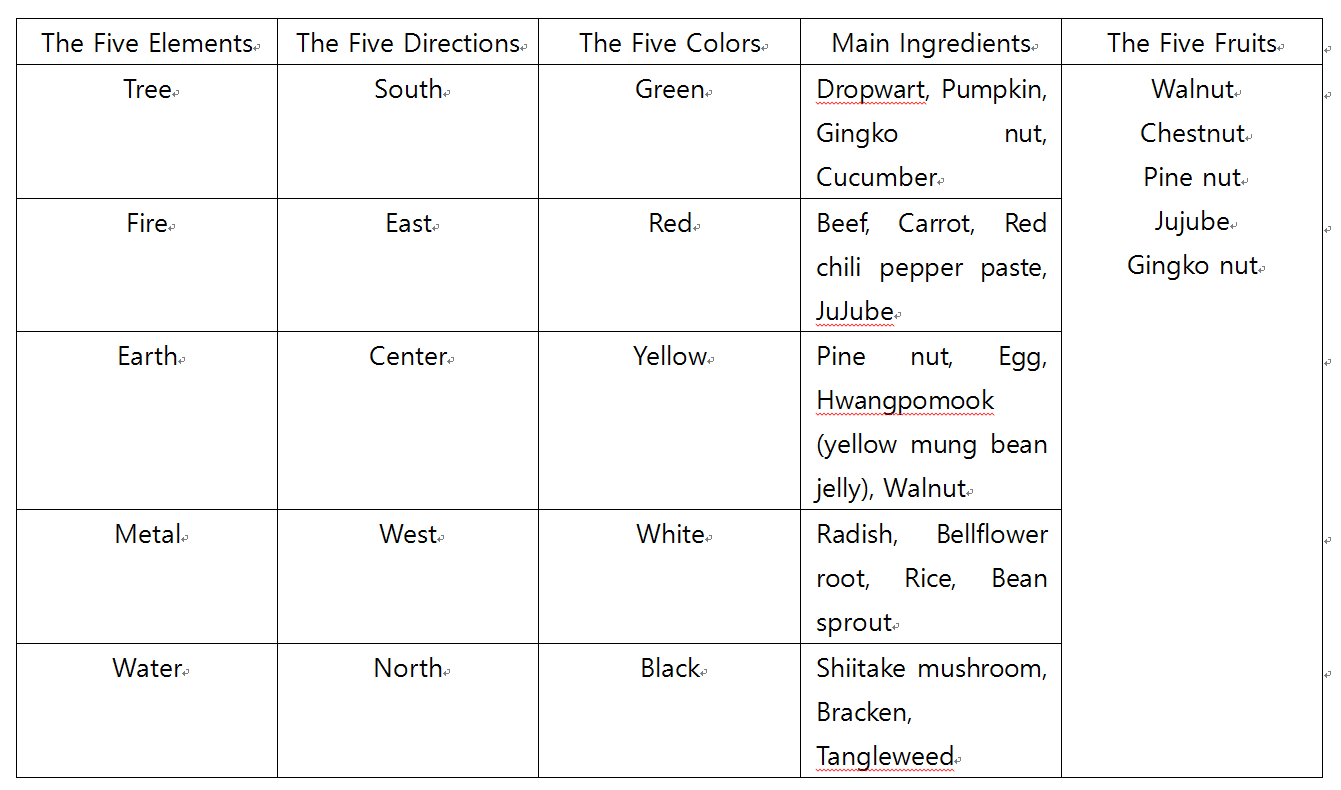
The harmony of five flavors
Rice – sweet / Jeopjang (fermented soy sauce) – salty / Sesame oil – savory / Red chili pepper paste – spicy / Bean sprout – astringent
The globalization of Jeonju Bibimbap
: In the year 2000, factory and production line to produce take-out Bibimbap were installed. Ready in two-minute in microwave oven, so that Jeonju Bibimbap can be enjoyed anywhere.
Jeonju Bibimbap spreads to United States and China
: Jeonju City officials visited the New York City in October 2008 to introduce Jeonju Bibimbap. At Macy’s, one of the biggest department store in the US, the traditional Korean food master with over 40 years of experience Kim Yeon-im demonstrated how to make Jeonju Bibimbap.
Han-Style Expo / The opening of Jeonju Bibimbap Research Center
: Jeonju Bibimbap Research Center will develop different kinds of Bibimbap suited to the foreigners, while simultaneously standardizing the Bibimbap recipe. The center will also develop ‘instant Bibimbap’ and its packaging so that Bibimbap can be conveniently enjoyed anywhere. The center will also assist in the marketing of Bibimbap to overseas.
Developing Jeonju Bibimbap as food for astronauts
: Jeonju Bibimbap has been made into a certified astronaut food. This proves that Jeonju Bibimbap can also be consumed as a field ration or emergency ration. Jeonju Bibimbap, certified by the Institute for Biomedical Problems (IBMP) in Russia, will be supplied to the International Space Station and Mars exploration too.
<video Source> : https://www.facebook.com/globaljeonju




1 Comment